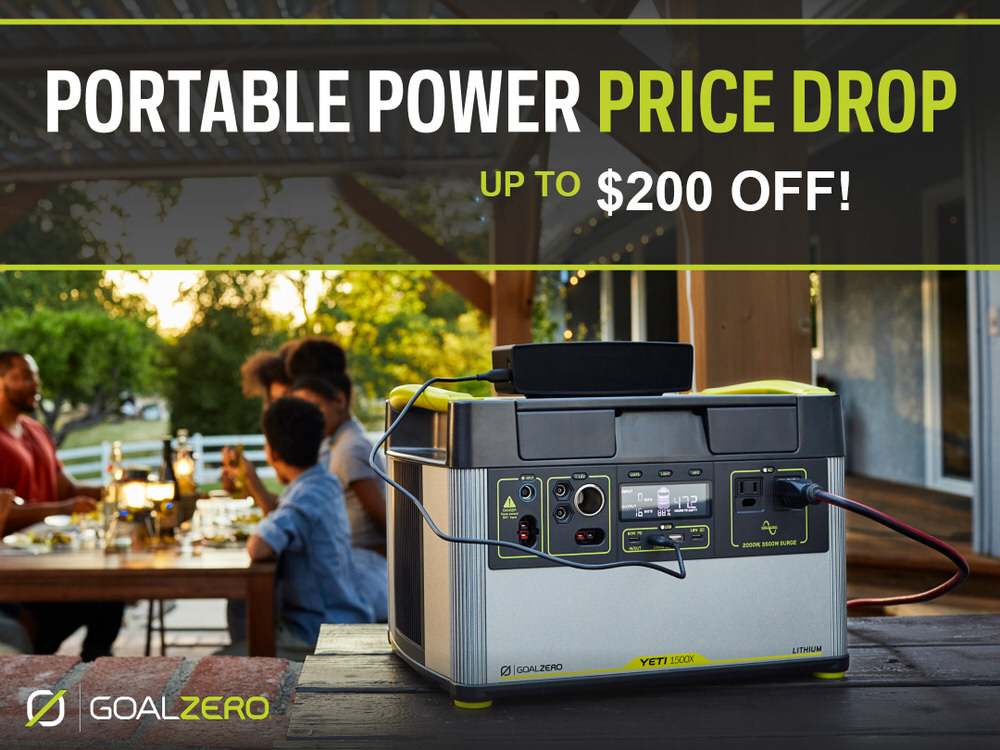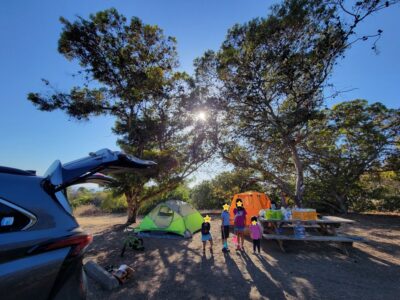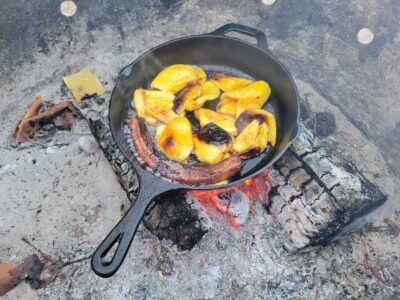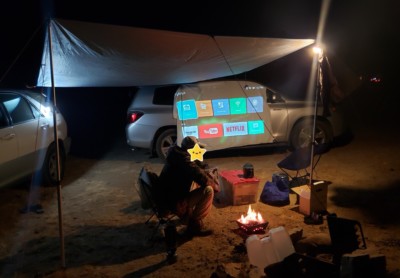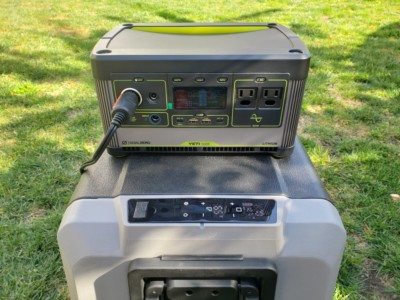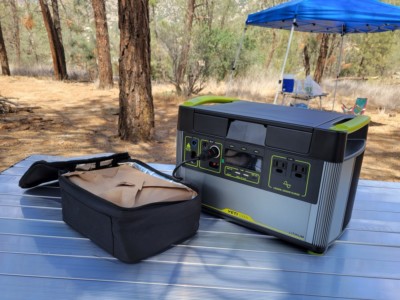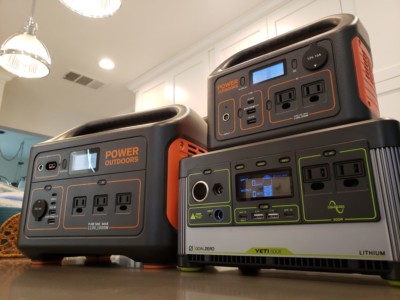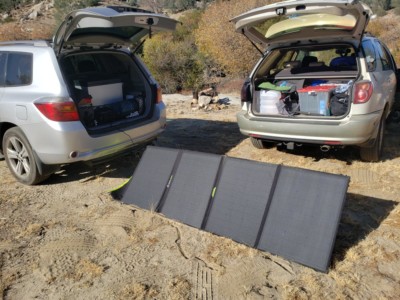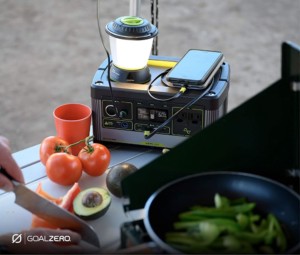Contents
Price Drop!
Goal Zero announced a permanent price drop on some of its most popular Yeti X-series power stations via an email on September 15, 2022. They are useful for power outages, emergency preparation, and recreation — all the while be rechargeable with solar panels. They have become an essential part of my survival and camping kit and is a product area I have had much experience with.
![]()
Goal Zero Yeti Comparison
| Product | Battery Capacity | AC Inverter (Continuous) | AC Inverter (Surge) | Max Input | Expandable | Charge Controller | WiFi, BT | Weight | Dimensions (inches) |
|---|---|---|---|---|---|---|---|---|---|
| Yeti 200x | 187Wh NMC | 120W | 200W | 120W | No | MPPT | No | 5 lbs | 7.9 x 5.1 x 5.1 |
| Yeti 500x | 505Wh NMC | 300W | 1,200W | 120W | No | MPPT | No | 12.9 lbs | 7.5 x 11.3 x 5.8 |
| Yeti 1000c | 983Wh NMC | 1,200W | 2,400W | 300W | No | MPPT | No | 31.7 lbs | 15.3 x 10.2 x 9.9 |
| Yeti 1000 Lithium | 1,045Wh NMC | 1,500W | 3,000W | 360W | Yes. Yeti Link, MPPT | PWM | No | 40 lbs | 15.3 x 10.1 x 9.3 |
| Yeti 1000x | 983Wh NMC | 1,500W | 3,000W | 600W | Yes. Yeti Link | MPPT | No | 31.7 lbs | 15.3 x 10.2 x 9.9 |
| Yeti 1500x | 1,516Wh NMC | 2,000W | 3,500W | 600W | Yes. Yeti Link | MPPT | WiFi, BT | 45.6 lbs | 15.3 x 10.2 x 10.4 |
| Yeti 3000x | 3,032Wh NMC | 2,000W | 3,500W | 600W | Yes. Yeti Link | MPPT | WiFi, BT | 69.8 lbs | 15.3 x 10.2 x 13.6 |
| Yeti 6000x | 6,010Wh NMC | 2,000W | 3,500W | 600W | Yes. Yeti Link | MPPT | WiFi, BT | 106 lbs | 15.3 x 10.1 x 17 |
Which One Is Right For You?
What size battery should you get? How long will it power your fridge for? How long will it take to recharge? The below calculations can help answer those questions and are rough ESTIMATES as conditions, battery quality, and age can vary. For more details and calculations, please see one of our in-depth power station reviews: Yeti 1500x / Goal Zero vs Jackery 1000Wh Comparison / Yeti 1000x / Yeti 500x.
How much energy a battery can store is measured in Wh (Watt-hours), and how much power is used or produced in W (Watts).
Ideal Battery Size
- Calc: Battery capacity (Wh) = Watts used by device x Hours needed for / 0.85
- 10-15% of power is lost during power conversion
- 45W car fridge needed for 8 hours: Minimum 424Wh power station (45W x 8 / 0.85)
Watts Used/Produced
- Calc: Watts used or produced by device = Voltage x Amperage
- Vacuum with 120V @ 9.5A uses 1,140W
- Solar panel with 12V @ 10A can produce up to 120W
Time Before Battery is Empty
- Calc: Hours available for device = Battery capacity (Wh) x 0.85 / Watts used by device
- 10-15% of power is lost during power conversion
- 60W laptop with 505Wh battery: Up to 7.2 hours (505Wh x 0.85 / 60W)
Why Lower Prices?
The company did not share why their three Yeti X power stations got new, lower prices, but I can only speculate about three reasons:
- Increased competition from brands like EcoFlow, Jackery / Geneverse, Bluetti, Anker, and others with generally lower pricing
- Increased demand for power stations for reasons like climate-related disasters (heat, wind, water) and power-on-the-go by mobile workers, influencers (blogging, vlogging), and travelers (RV Life, overlanding/boondocking, camping)
- Clearance of existing inventory to make room for a new product launch
Considering that Goal Zero’s Yeti X series made its debut on January 7, 2020, at CES 2020, the product line has started to show its age in the face of competitors innovating, matching, and even surpassing in some key areas with new power stations like EcoFlow’s Delta Pro (see Review) and Delta 2 (see Quick Look).
However, Goal Zero has remained the global market leader with its quality components, safety track record, and large ecosystem of products for the outdoor, vehicle, and home backup markets. The company better come up with new products soon, though, or it may find itself facing an even stiffer battle against great engineering by several of its competitors. Furthermore, market segments like portable air conditioners (like the Zero Breeze Mark 2 and EcoFlow Wave) have been emerging.
Goal Zero has remained the global market leader with its quality components, safety track record, and large ecosystem of products for the outdoor, vehicle, and home backup markets.
Li-ion: LiFePO4 vs NMC
There has been a lot of debate on whether Nickel Manganese Cobalt (NMC) or Lithium Iron Phosphate (LiFePO4) is better. Both are Lithium-ion batteries. Goal Zero, Jackery, and most of today’s power station manufacturers use NMC, but why do EcoFlow and Bluetti use LiFePO4 when they are bulkier and heavier? They hold some important advantages over NMC:
- Safer, less volatile, and thus cheaper to manufacture
- Charge cycle: 1500-2000 (10+ years)
- NMC: 20-25% capacity loss after every 500 cycle (6-10 years for up to 2000 cycles, after which capacity is vastly diminished)
- Usable in more extreme temperatures (-4F/-20C to 176F/80C). NMC: only 140F/60C max
- Check with manufacturer for your battery to be sure
- Holds 350-day charge. NMC: 300
LiFePO4 batteries are less volatile (safer), more usable in extreme temperatures, and have a higher charge cycle count (battery lifetime) than NMC.
Sources at Goal Zero had told me that the company had been evaluating and monitoring customer demand for LiFePO4, but as of 2022, they remained focused on NMC for their lighter weight, smaller size, and popularity.
Who is Goal Zero (GZ)?
Going through the company’s history, the founder in 2007 started with a vision to help the poorest people of Congo get out of poverty. Their first product: the GoBe battery that now is the Yeti 150. Goal Zero was formed in 2009 with the mission to do good and provide “reliable power in the hands of every human being”. Its charitable arm had provided aid in areas struck by natural disasters.
Goal Zero’s portable power stations stand out in an increasingly competitive field with their unmatched safety record and use of quality components — and correspondingly high price tag. In fact, their Yeti 6000x with its 6000Wh of energy (that can also be extended) was a powerhouse that not many competitors have been able to safely provide.
A friend of mine said years ago that GZ is “the best of the best” because of one simple reason: their vast ecosystem. I did not understand at the time what he meant, but as I learned more about the Yeti 1500x, my eyes were opened. The Yeti 1000x also taps into that same collection, but the Yeti 1000 Core does not. Competitors have been catching up, however, including EcoFlow and Bluetti. Jackery has remained focused on the mobile consumer while its sister company, Geneverse, has expanded into the home backup market.
Where To Buy
- Goal Zero Products
- Yeti Power Stations
- 12V Car Charger (60W or 120W) (Goal Zero | Amazon)
- Solar Panels
- Cables (Goal Zero’s “HPP” is the same as “APP”)
- Yeti Link Expansion (See YouTube: Yeti Link + Tank)
- iGreely Extension Cables: 8mm / HPP (APP)
Related Posts
- Power Generators: Gas vs Propane vs Battery Station (and Solar)
- Reviews
- EcoFlow Delta Pro LiFePO4
- EcoFlow 220W Bifacial Solar Panel
- Goal Zero vs Jackery: Yeti 1000 Core vs 1000X vs Explorer 1000
- Goal Zero Yeti 1500x / Yeti 1000x / Yeti 1000 Core / Yeti 500x
- Jackery Explorer 1000 / Explorer 300
- BigBlue Cellpowa500 LiFePO4
- Rockpals 500W / nrgGo 400
- Quick Look
Other Useful Topics
Power Stations Comparison
Here is a summary of various power stations from Goal Zero, EcoFlow, Jackery Explorer, and others.
| Product | YuenX Review | Battery Capacity | AC Power (Steady) | AC Power (Peak) | Max Input | MSRP | Expand- able | Solar Charge | WiFi, BT | Battery Vendor | Weight | Dimensions (inches) |
|---|---|---|---|---|---|---|---|---|---|---|---|---|
| Goal Zero Yeti 200x | No | 187Wh NMC | 120W | 200W | 120W | $299 | No | MPPT | No | LG | 5 lbs | 7.9 x 5.1 x 5.1 |
| Jackery Explorer 300 | Review | 293Wh NMC | 300W | 500W | 90W | $349 | No | MPPT | No | EVE | 7.1 lbs | 9.1 x 5.2 x 7.8 |
| Goal Zero Yeti 500x | Review | 505Wh NMC | 300W | 1,200W | 120W | $549 | No | MPPT | No | LG | 12.9 lbs | 7.5 x 11.3 x 5.8 |
| Jackery Explorer 500 | No | 518Wh NMC | 500W | 1,000W | 100W | $599 | No | MPPT | No | LG | 13.3 lbs | 11.8 x 7.6 x 9.2 |
| Bluetti EB70S | Review | 716Wh LiFePO4 | 800W | 1,400W | 200W | $599 | No | MPPT | No | N/A | 21.4 lbs | 12.6 x 8.5 x 8.7 |
| EcoFlow Delta 1000 | No | 1,008Wh NMC | 1,600W | 3,100W | 1,000W | $799 | No | MPPT | No | EcoFlow | 30.9 lbs | 15.7 x 8.3 x 10.6 |
| EcoFlow Delta 2 | Quick Look | 1,024Wh LiFePO4 | 1,800W | 2,700W | 1,200W | $999 | Yes. EB, EB | MPPT | Yes | EcoFlow | 27 lbs | 15.7 x 8.3 x 11 |
| Goal Zero Yeti 1000c | Review | 983Wh NMC | 1,200W | 2,400W | 300W | $999 | No | MPPT | No | LG | 31.7 lbs | 15.3 x 10.2 x 9.9 |
| Goal Zero Yeti 1000x | Review | 983Wh NMC | 1,500W | 3,000W | 600W | $1,299 | Yes. YL | MPPT | No | LG | 31.7 lbs | 15.3 x 10.2 x 9.9 |
| Jackery Explorer 1000 | Review | 1,002Wh NMC | 1,000W | 2,000W | 200W | $999 | No | MPPT | No | LG, BAK | 22 lbs | 13.1 x 9.2 x 11.1 |
| Jackery Explorer 1000 Pro | No | 1,002Wh NMC | 1,000W | 2,000W | 800W | $1,099 | No | MPPT | No | LG, BAK | 25.4 lbs | 13.4 x 10.3 x 10.1 |
| Goal Zero Yeti 1500x | Review | 1,516Wh NMC | 2,000W | 3,500W | 600W | $1,799 | Yes. YL | MPPT | WiFi, BT | LG | 45.6 lbs | 15.3 x 10.2 x 10.4 |
| Jackery Explorer 1500 | No | 1,534Wh NMC | 1,800W | 3,600W | 500W | $1,599 | No | MPPT | No | N/A | 35.3 lbs | 14 x 10.4 x 12.7 |
| Jackery Explorer 2000 Pro | Review | 2,160Wh NMC | 2,200W | 4,400W | 1,400W | $2,099 | No | MPPT | No | N/A | 43 lbs | 15.1 x 10.5 x 12.1 |
| Goal Zero Yeti 3000x | No | 3,032Wh NMC | 2,000W | 3,500W | 600W | $3,199 | Yes. YL | MPPT | WiFi, BT | LG | 69.8 lbs | 15.3 x 10.2 x 13.6 |
| EcoFlow Delta Pro | Review | 3,600Wh LiFePO4 | 3,600W | 7,200W | 1,800-6,500W | $3,699 | Yes. EB | MPPT | WiFi, BT | EcoFlow | 99 lbs | 25 x 11.2 x 16.4 |
| Goal Zero Yeti 6000x | No | 6,010Wh NMC | 2,000W | 3,500W | 600W | $4,999 | Yes. YL | MPPT | WiFi, BT | LG | 106 lbs | 15.3 x 10.1 x 17 |
Gas/Propane Generators vs Battery Power Stations
In July 2020, I wrote about this topic after many asked what their differences were. In short, gas/propane generators can run virtually forever but are loud, dirty, and potentially quite dangerous. Battery power stations, on the other hand, are more portable, silent, less volatile, and can be operated indoor, but depend on external power (like solar) to recharge. Where gas/propane are used to GENERATE electricity, batteries STORE them for later use. Personally, I am a fan of the latter because they are so easy to carry around and are safer to use.
Goal Zero, EcoFlow, Bluetti, and Jackery are the leading brands in battery power stations.
Battery Technology and Safety
Goal Zero debuted with Lead-Acid batteries that were bulky and heavy. Today’s devices use Lithium-ion — commonly Nickel Manganese Cobalt (NCM) or Lithium Iron Phosphate (LiFePO4 / LFP) chemistries — for more power in a smaller, lighter package. NMC, however, is more volatile than LiFePO4 and becomes riskier as more cells are packed together. Goal Zero and Jackery used NMC for some time whereas EcoFlow and Bluetti use LiFePO4. Jackery launched its first LiFePO4 model in mid-June 2023 and Goal Zero in October that year.
- How much energy a battery can store is measured in Wh (Watt-hours), and how much power is used or produced in W (Watts)
- The higher the Watt-hour (Wh) capacity rating, the more dangerous the battery could become if not handled right
The quality of the battery cells and the BMS (Battery Management System) are crucial for safety.
Cell Manufacturers
Battery cells made by LG and Sony are among the best in the hobbyist world as are Sanyo/Panasonic and Samsung. Goal Zero’s are by LG. During my years of research, I found that use of lower-quality batteries could pose a serious risk to life and property and should become a crucial part in deciding what to buy.
Safety
The second part in a battery’s safe operation depends heavily on the design and BMS (Battery Management System). Some BMS manufacturers, unfortunately, overstate their capabilities that could lead to catastrophic failure.
- Design should allow for proper, thermal cooling, use quality components, and obtain proper certifications
- Batteries made by known manufacturers are less likely to fail
- BMS should sufficiently restrict the battery from going past its capabilities

